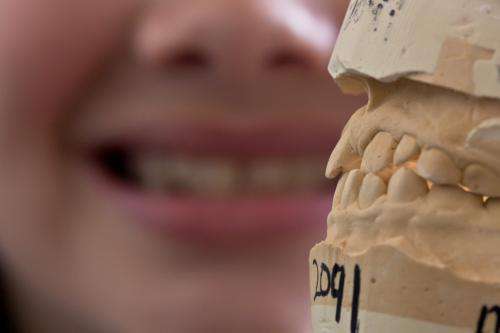Dental age method could help refugee identity

A dental age estimation method developed by Norwegian scientists in the mid-1990s has been put to the test by a University of WA PhD candidate to see how reliable and applicable it is.
Shalmira Karkhanis, based at UWA's Centre for Forensic Science, set out to develop age estimation standards for WA's population in light of the fact many refugees and asylum-seekers often lack proof-of-identity documents that would highlight their age.
In 1995, Dr Sigrid Kvaal and colleagues proposed X-rays as a non-invasive way to estimate the age of adults in forensic work and archaeological studies, based on the relationship between age and the pulp size on periapical (area surrounding a tooth's root) dental radiographs.
"This method has considerable forensic applicability, specifically in estimating age in living individuals," Ms Karkhanis says.
"The intra and inter-observer errors were within acceptable standards, hence the process of acquiring measurements can be considered to be reliable.
"Previous research has indicated that secondary dentin [calcified tissue] deposition is significantly correlated with age so, consequently, the scientific basis for this method is robust."
In his research, Ms Karkhanis analysed 279 digital orthopantomograms – panoramic scanning dental X-rays of the upper and lower jaw – to gain length and width measurements of the tooth and pulp chamber in maxillary (upper jaw) central and lateral incisors, second premolars, mandibular (lower jaw) lateral incisors, canines and first premolars.
A series of ratios was then calculated from the measurements to formulate age estimation regression models. Maxillary central incisors created the most accurate model, followed by maxillary second premolars.
Ms Karkhanis says the Kvaal method appeared to be the most viable age estimation technique simply because teeth are extremely resilient.
"They can withstand extreme conditions such as heat and chemical insults," he says.
"Teeth also undergo a sequential process of development and certain progressive changes, such as secondary dentin deposition.
"And certain age estimation methods using teeth also offer a simple, non-invasive approach."
Some asylum-seekers may not have had access to first class dental treatment but Ms Karkhanis says the technique analyses both clinically sound and untreated teeth, meaning accessibility to dental treatment is not an issue.
"Poor quality X-rays is the one thing that will hamper the age estimations," she says.
"Access to good quality X-rays is required for this technique, given this results in acquiring accurate measurements."
The age estimation regression models in Ms Karkhanis' study delivered accuracy rates comparable – and sometimes higher than – established skeletal identification methods using radiographs.
More information: Shalmira Karkhanis, Peter Mack, Daniel Franklin, "Age estimation standards for a Western Australian population using the dental age estimation technique developed by Kvaal et al.," Forensic Science International, Volume 235, February 2014, Pages 104.e1-104.e6, ISSN 0379-0738, dx.doi.org/10.1016/j.forsciint.2013.12.008.



















